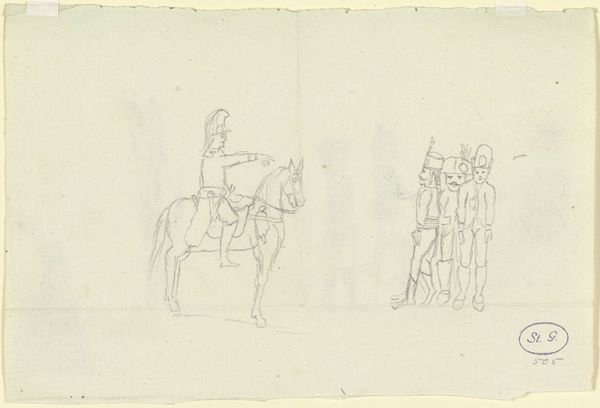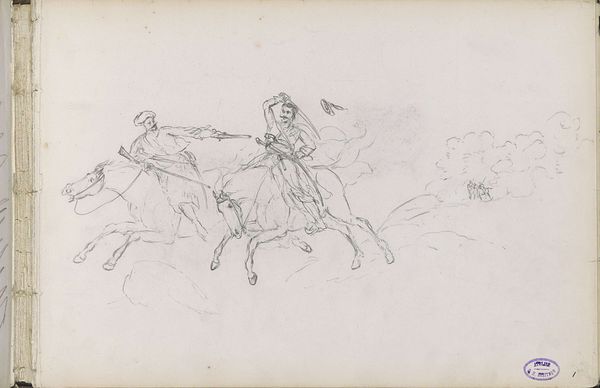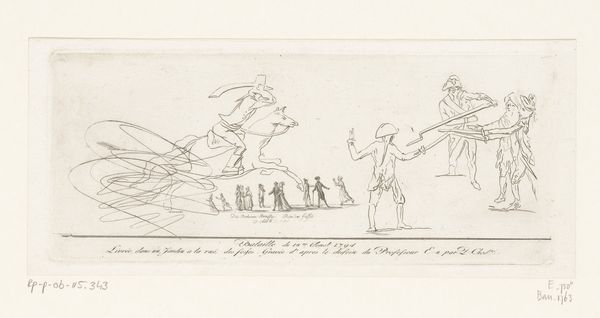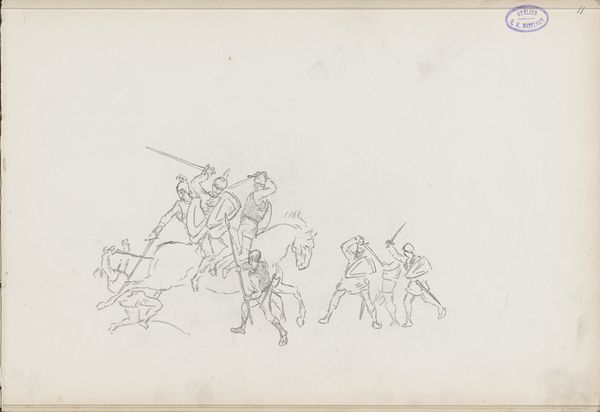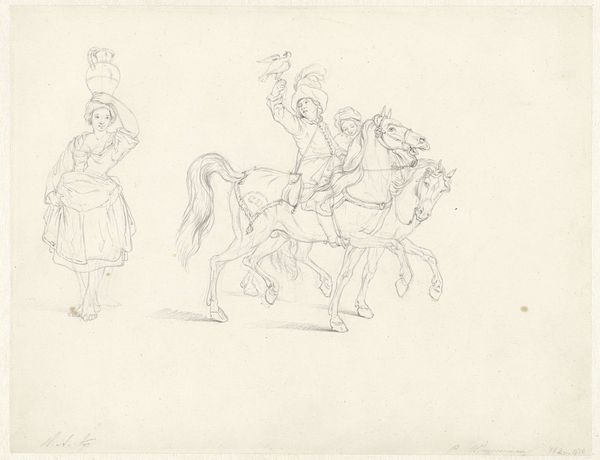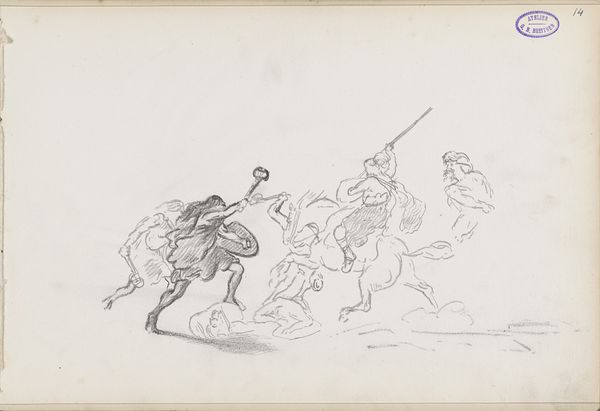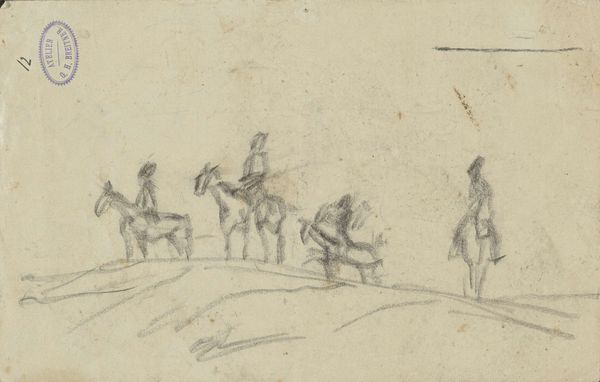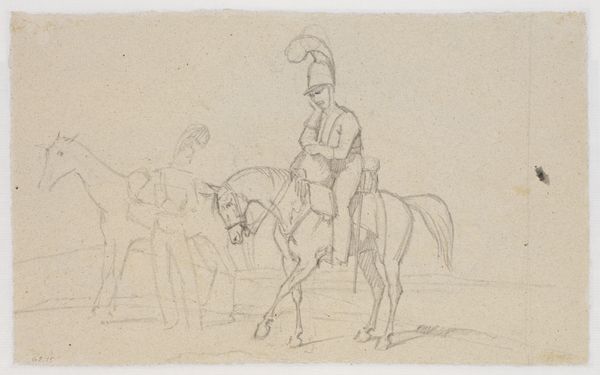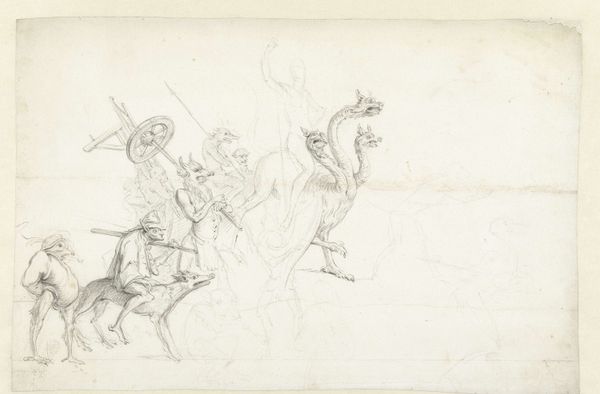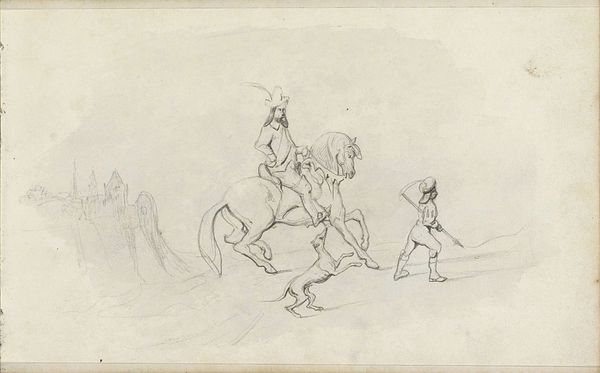
drawing, ink
#
drawing
#
narrative-art
#
pen sketch
#
figuration
#
ink
#
romanticism
#
history-painting
Copyright: Public Domain
Editor: This is *Three Armed Riders*, a pen and ink drawing by Franz Pforr, from around 1791 to 1803. It's at the Städel Museum. There’s a strange, almost dreamlike quality to it. The sketchiness adds to the mystery. What do you see in this piece, and how do you interpret the title? Curator: The title immediately suggests an anomaly, doesn’t it? In art, extra limbs, missing eyes, or distorted features are rarely arbitrary. They act as potent symbols. What memories do the images of armed horsemen evoke? Think historically. Editor: Immediately, it suggests conflict, power, and maybe even a sense of impending doom, but I can’t place what era… Curator: The Romantic era, as indicated, frequently tapped into themes of the past, and idealized versions of heroes of that era. This drawing reads almost as a meditation on chivalry, perhaps critiquing its idealized forms as naive, incomplete—like the figures, hastily drawn, unfinished. What would happen if one man actually *had* three arms? How would that change your perspective? Editor: I guess it wouldn’t make him inherently more powerful, necessarily, it just adds…complexity to the imagery and it's also interesting that one man is clearly missing his arms and looks completely exposed! Curator: Precisely. Perhaps Pforr is alluding to the psychological burdens that soldiers bear. The fragmented forms suggesting fractured psyches, the weight of history pressing upon them. A symbol not of heroism, but of its cost. The artist plays with form as an exploration of humanity's inner turmoil, its lasting imprint on identity and legacy. Editor: I’ll definitely look at Romantic art differently after this! It's more than heroic figures—there’s something else. Curator: It's always layered, especially through symbolism. Looking deeper, you see reflections of ourselves.
Comments
No comments
Be the first to comment and join the conversation on the ultimate creative platform.
